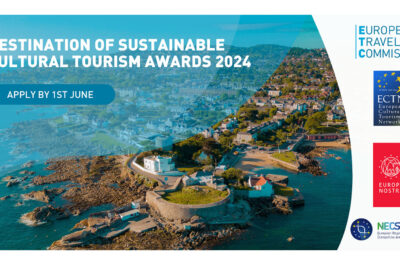The research found that first-time travellers who visit multiple destinations on their trip prioritise countries that are perceived to be more ‘prestigious’, such as France, Italy and Germany.
BRUSSELS – The scenic beauty, natural landscapes, diversity of cultural attractions and the good weather are just some of the reasons why Europe remains the most aspirational holiday spot among long-haul destinations for South-East Asian holidaymakers. That is according to the latest research on the ‘South-East Asian Outbound Travel Market’ from the European Travel Commission (ETC), which aimed to provide a thorough analysis investigating the potential of this market for European tourism. The report is based on primary research among potential visitors to Europe, with a focus on four key markets: Indonesia, Thailand, Malaysia and Singapore.
Unity in diversity
The research found that first-time travellers who visit multiple destinations on their trip prioritise countries that are perceived to be more ‘prestigious’, such as France, Italy and Germany. The ease of borderless travel between countries, backed by a well-developed tourism infrastructure, adds to Europe’s appeal as a continent with ‘unity in diversity’.
Just as European destinations are united in diversity, so too are the tourism interests amongst the four market. Specific exploration of passion-related or interest-based travel themes among South-East Asian travellers establishes Europe’s competitive advantage on slow adventure, culture and history, nature, city life and local gastronomy – the top five travel themes considered as the ‘main reason for travel’.
Travel trade insights: profile of South-East Asian travellers
Long-haul travellers from South-East Asia are mainly young couples and families. Nevertheless, evidence points to increasing numbers travelling solo, especially among financially independent working women, in countries such as Singapore and Malaysia. Group travel (friends/friends and family) also remains popular in this market, with travel parties usually consisting of 2-4 people. This trend is larger in Malaysia and Indonesia, where multigenerational travel is more common than in Singapore and Thailand.
As for age and frequency of travel, the travelling class tends to be between 21-54 years old, with evidence suggesting that South-East Asians undertake an average of 2-3 holidays overseas, with one long-haul trip typically lasting 10-21 days.
In terms of accommodation preferences, family travellers prefer four-star hotels across all four key markets, with a larger proportion of Singaporeans opting for five-star hotels, and some cost-conscious travellers (Malaysians and Thais) choosing to stay in budget accommodation. When deciding where to stay, online travel agencies are being used more and more, with Expedia, booking.com and Agoda as the clear leaders.
Destination trends revealed
South-East Asian travellers are mostly city enthusiasts, therefore travel itineraries that incorporate these interests are expected to appeal to both first-time and repeat visitors to Europe. However, boiling down to the four key markets in more detail provides some useful insights into travel trends.
For Singaporeans, destination choices vary significantly as they are more likely to tick one or more destinations off their bucket list each time they travel overseas, with traditional holiday destinations such as the UK, Germany, Italy, and Switzerland proving to be the most popular. In Malaysia, preferences have undergone noticeable change over the years, with Central/Eastern destinations enjoying more travellers from this market in recent years, while demand for Turkey and the Balkans is also rising, due to their Muslim-friendly environment. For Indonesians, the evergreen destinations in Europe are the UK, Italy, Germany, Switzerland, Netherlands and Turkey, while in Thailand, Europe commands the largest share of long-haul travel, with the traditional Western European destinations most popular.
Barriers to travel to Europe
Europe is perceived as an expensive holiday destination which appears to be the main barrier to travel to the continent for South-East Asian travellers. Limited air connectivity (direct flights), especially from Malaysia and Indonesia, and the need to apply for a Schengen visa (for citizens of Indonesia and Thailand) are mentioned as some of the key deterrents for travel to Europe from these markets.
Tatiana is the news coordinator for TravelDailyNews Media Network (traveldailynews.gr, traveldailynews.com and traveldailynews.asia). Her role includes monitoring the hundreds of news sources of TravelDailyNews Media Network and skimming the most important according to our strategy.
She holds a Bachelor's degree in Communication & Mass Media from Panteion University of Political & Social Studies of Athens and she has been editor and editor-in-chief in various economic magazines and newspapers.





























































































































































































